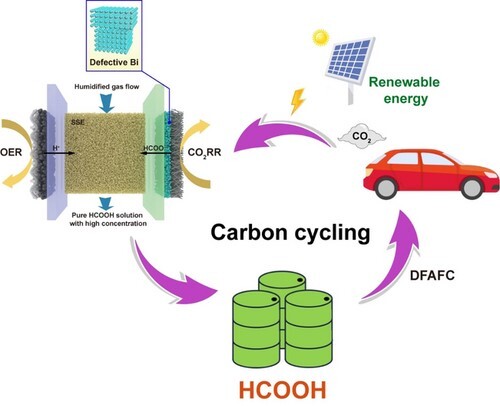Concentrated Formic Acid from CO2 Electrolysis for Directly Driving Fuel Cell

Angew. Chem.Int. Ed. 63 (2024), e2023176
The production of formic acid via electrochemical CO2 reduction may serve as a key link for the carbon cycle in the formic acid economy, yet its practical feasibility is largely limited by the quantity and concentration of the product. Here we demonstrate continuous electrochemical CO2 reduction for formic acid production at 2 M at an industrial-level current densities (i.e., 200 mA cm−2) for 300 h on membrane electrode assembly using scalable lattice-distorted bismuth catalysts. The optimized catalysts also enable a Faradaic efficiency for formate of 94.2 % and a highest partial formate current density of 1.16 A cm−2, reaching a production rate of 21.7 mmol cm−2 h−1. To assess the practicality of this system, we perform a comprehensive techno-economic analysis and life cycle assessment, showing that our approach can potentially substitute conventional methyl formate hydrolysis for industrial formic acid production. Furthermore, the resultant formic acid serves as direct fuel for air-breathing formic acid fuel cells, boasting a power density of 55 mW cm−2 and an exceptional thermal efficiency of 20.1 %.
